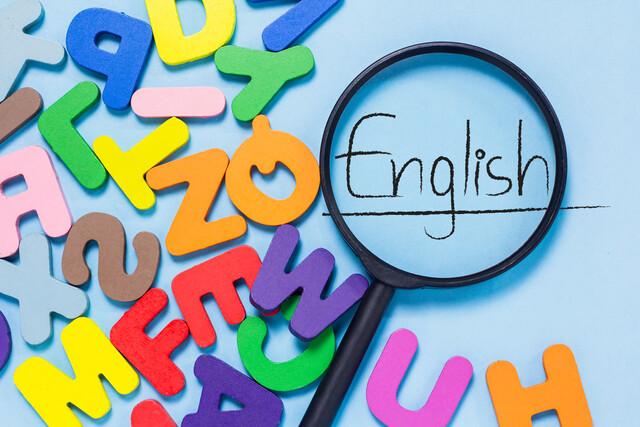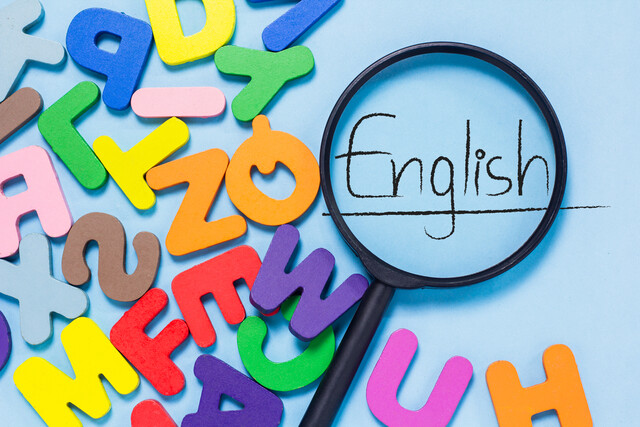Usually (if not always) you will be using a textbook with your class. There are several key things to look for when choosing a textbook that will greatly benefit both you and your students. This lesson will cover the issues of PPP, audio and transcripts, specific book choice, UK versus US English, text versus images, the four language skills, exercises in correcting mistakes, and homework as they relate to choosing and using textbooks.
PPP-ready?
Ideally, find a textbook that has lessons already organized according to the PPP methodology.
One example is the Passport textbook series from Oxford University Press, which follows PPP methodology.
This kind of textbook will have short chapters which are each designed to be a single classroom lesson.
Each chapter will first introduce vocabulary and grammar at the beginning which you can use in your Presentation, followed by exercises like quizzes, reading comprehension, or audio comprehension for your Practice. Finally, the chapter will end with activities for the students to do in pairs that you can use in your Production. Finding this kind of textbook can make a teacher's job much easier.
If the textbooks you're choosing (or the ones you have to use) don't follow PPP, you can usually adapt the textbook to follow the PPP methodology anyway. In this case, you have to use your knowledge of the PPP methodology in deciding which parts of each chapter can be used for each part of PPP. You change the order from what is presented in the chapter to what you want to do in the classroom in order to follow PPP methodology.
For example, some textbooks have chapters that start with a text to read or with an audio exercise to listen to, and then includes the vocabulary and grammar afterward. For your class you would not start this way, because in PPP we don't make students read or listen to a text before they learn the vocabulary or grammar from the text.
So if your textbook is designed this way, choose the chapter's vocabulary and grammar sections to go first in your classroom lesson. Use these parts to introduce the vocabulary and then the grammar in the ways we have discussed as parts of the Presentation.
The vocabulary section in the book can be saved for the students to refer to during the rest of the class, and the grammar section can be referred to during your presentation of the grammar.
Check out the chapter's various quizzes and activities. Choose the ones that students can do alone for the Practice section of your class. For example, textbooks often have a reading section with either comprehension questions or a gap-fill exercise. This makes for a good Practice exercise.
If the chapter has a text or audio, you can also use that either for the Practice or the Production section of the class. If the activity involves having the students listen to the audio while answering questions or filling in blanks, this is excellent for Practice.
If the audio is a dialogue (and the textbook includes the transcript), the listening activity can be followed up by having students play roles of the dialogue and reading it aloud, either as a the whole class, in groups or in pairs.
If there are activities that involve working in pairs or small groups, you can save those for the Production part of the class.
An important note: If the textbook just doesn't have enough of the right elements to be adapted into a full PPP class, you should make your own exercises. In this course, you are learning about many different kinds of games and activities that can be used to teach different forms of grammar. So even if your textbook is lacking these vital aspects of teaching grammar, you can still include them in your lesson plans and teaching.
Audio and transcripts
Many textbooks include CDs. Nowadays, some even have online mp3s that can be downloaded from the internet for you to play on your smartphone or other device.
It's really helpful to use such audio in your classroom, if possible. First of all, it exposes the students to a new voice and gives them a chance to try to understand a native speaker besides yourself, the teacher. They have a chance to hear different accents, different ways of speaking.
It's also helpful to you as a teacher, since you can let the audio presentation do the talking during that part of class. Teaching is hard work, and it's nice to let a CD take over for a few minutes!
One of the better audio exercises in a classroom is when students have to listen to the audio and answer comprehension questions about what they have just heard. Another is when students listen to the audio and fill in missing words in a text, especially when the works are part of the target language for the lesson. If your textbook comes with audio exercises, check to see if these kinds of valuable exercises are featured.
One very important note about using audio in general: When the audio is based on a full text or dialogue, always make sure there is a transcript of the audio available for your classroom lesson.
Most textbooks offer this, either within the student book itself, in the back of the book, in the teacher's book, or sometimes as an online download.
Though it is a rule of thumb in English teaching rule that teachers should always give students a transcript of what they have listened to so that they can see exactly what they have listened to (afterwards as part of an exercise or just in a secondary listening), not all textbooks provide this.
Textbooks that don't provide audio transcripts are not ideal. Some textbooks that don't offer this can still be used, because some of the audio is based on a blank-filling exercises, so in effect the transcript is complete once the students have filled in the blanks. Sometimes the audio is part of a very short exercise and it's okay to use it without the transcript.
But avoid doing any significant listening exercise that does not include a transcript for the students to refer to afterwards, and avoid any textbook that has no transcripts for significant listening exercises that include dialogues, texts, etc.
Right book for the right class
While it's obvious that you will try to use a book that goes along with your students' level, you should learn as much as you can about your students before the class and make sure your textbook is an appropriate one.
There are different books for adult learners, children, teenagers. Some students will have different goals than other students, and there are specialized books for business people, restaurant workers, hotel workers, etc.
There are books that cover preparations for specific standardized English tests like TOEFL, IELTS or First Certificate. No matter what, try to guarantee that the book you are using is either perfect for, or can at least be adapted to, the class you are teaching.
UK or US?
Textbooks produced in the US will feature US English; likewise for UK textbooks and UK English.
If you're teaching in the USA and your book tells students to look in their car's boot instead of the trunk, it's a problem. And vice versa if you're in the UK and the book talks about an elevator instead of a lift. Telling a student in the US that they live in a flat instead of an apartment is flat-out wrong.
The problem is not only regarding nouns. UK textbooks will teach "shall" which is just not used in US English. The British say "you needn't do it" when Americans say "you don't need to do it."
Don't accidentally end up with a textbook teaching the English from the other side of the Atlantic, unless you're prepared to constantly compensate for it in the class.
However, some textbooks include both UK and US English together.
Many textbooks come with audio featuring people speaking in different accents, whether from the UK or the US or other English-speaking countries, or even in the different accents to be found within every English-speaking country (a Texas accent, a New York accent, a Scottish accent, etc.) A little variety in the audio presentations that come with your textbook are a real plus for students.
Text versus images
Try to find a textbook that balances out text and images. We don't usually want a book that is too text-heavy, unless it's for a specialized class like a reading comprehension class. Otherwise a textbook with dense text can be off-putting and daunting to students. On the other hand, a book that is filled with images with very little text can end up being too light for day-to-day learning, though younger students will appreciate images as part of an attractive layout.
In terms of the images themselves, make sure they are quality images. No grainy black and white, no lousy drawings. Cartoonish images, if done well, can be appropriate for younger students but all wrong for an adult class.
The four language skills
Unless you're teaching a specialized class (say in listening comprehension or speaking skills), make sure your textbook features a good mix of the four language skills of reading, writing, speaking and listening.
This is especially important for students who are strong in some skills but weak in others. It's common for students to be able to understand English better than they can speak English, and so a book that doesn't help you teach speaking skills will be a disadvantage in your class. In this case you would have to design your own exercises for the students to practice their speaking skills. A really good book will have activities for all four skills in each chapter or lesson.
Does it use correction of mistakes in exercises?
As covered elsewhere in this course, some teaching authorities think it's okay use exercises with mistakes for the students to correct in order to teach students to learn what's wrong with sentences.
For example, the students are asked to spot the grammatical mistake in a sentence and correct it, or are presented a multiple-choice quiz in which they are to choose the one correct sentence among several incorrect ones.
Others think this is a big mistake, because even exposing students to a grammatically incorrect sentence, whether it's written in the book or spoken by the teacher, runs the risk of imprinting this bad English as an option somewhere in the student's brain. In my years of teaching I have joined this camp.
You don't necessarily have to reject a textbook because of this, but if a textbook frequently uses these kinds of exercises, it's not the best option. If the textbook you're already using features these exercises, consider skipping them. Replace them with alternative exercises of your own design as necessary.
Homework
Does your textbook have a separate homework section at the end of each chapter? If not, does it have activities within the chapter that can be assigned for homework? Or does it come with a separate workbook than can be used for homework assignments?
Think about all of this in regards to your textbook, and if yours doesn't have it, be prepared to come up with some creative homework exercises of your own. In that case, make sure it follows the target language of your classroom lesson.
You might ask them to write a paragraph similar to one found in the chapter, except about themselves; you might have them use all the vocabulary and the grammar in new sentences. You can design a questionnaire based on the classroom exercise that they can bring home to use on their family or friends. The sky's the limit, so don't let lack of a workbook stop you from choosing that otherwise perfect textbook.






















